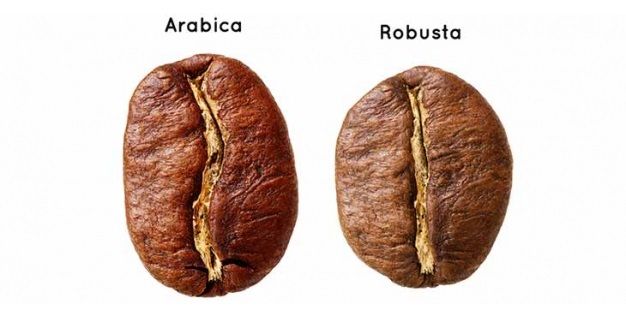Arabica and Robusta

As promised, I am going to talk about two different species of coffees: Arabica and Robusta. Arabica and Robusta are two main species of coffee beans that are widely cultivated and consumed around the world. While both types of beans are used to produce coffee, there are several key differences between them that make them unique.
Flavor
First and foremost, Arabica and Robusta beans differ in flavor. Arabica beans are generally considered to have a milder, more nuanced flavor than Robusta beans. They are often described as having a sweet, fruity, or floral taste, while Robusta beans are often described as having a more bitter, earthy, or nutty flavor. This difference in flavor is largely due to the different chemical compositions of the two types of beans. Arabica beans contain higher levels of acidity and lower levels of caffeine, which contribute to their smoother, sweeter taste. In contrast, Robusta beans contain lower levels of acidity and higher levels of caffeine, which give them their bolder, more bitter flavor.
Caffeine Content
In addition to flavor, Arabica and Robusta beans differ in terms of their caffeine content. Robusta beans typically contain about 2.7% caffeine, while Arabica beans contain about 1.5% caffeine. This means that a cup of coffee made from Robusta beans will generally be slightly more caffeinated than a cup of coffee made from Arabica beans. This difference in caffeine content is due to the higher levels of caffeine found in the leaves and stems of the Robusta plant, which are also used to produce coffee.
Growing Conditions
Another key difference between Arabica and Robusta beans is the growing conditions in which they are cultivated. Arabica beans are typically grown at higher elevations, between 2000ft and 6,500ft (600 to 2000 meters) above sea level, in areas with cooler temperatures and more rainfall. These conditions allow the Arabica plant to produce beans with a more delicate flavor and aroma. Countries in South America like Brazil, Colombia, Ecuador, Peru, and Bolivia are home for Arabica. Exceptionally, Brazil is the largest producer of Arabica coffee in the world and third largest producer of Robusta coffee due to its geographical location and huge difference in altitude in different locations.
In contrast, Robusta beans can be grown at lower elevations, below 2600ft (800 meters), and in a wider range of climates, including areas with more heat and humidity. This makes them more resistant to pests and diseases, but also contributes to their stronger, more bitter flavor. Countries in East Asia, like Vietnam, Indonesia, and South of India are home for Robusta Coffee. Vietnam is the largest producer of Robusta coffee in the world and is known for producing high-quality, specialty grade coffee. Additionally, African countries are producing mostly Robusta coffee with some producing both.
Read more about Coffee belt, a region of the world that is particularly well-suited to growing coffee plants!
Price $
In terms of price, Arabica beans are generally more expensive than Robusta beans due to the more demanding growing conditions and the perceived superior flavor of Arabica coffee. Arabica beans are often used in specialty coffee blends and in the production of single-origin and estate coffees, while Robusta beans are more commonly used in instant coffee, coffee blends, and espresso.
Overall, Arabica and Robusta beans are both widely used in the production of coffee, and the choice between them often comes down to personal preference and the specific use case. Whether you prefer the smooth, sweet flavor of Arabica beans or the bold, bitter flavor of Robusta beans, both types of beans offer a unique and delicious coffee-drinking experience. Check 5 ways for make coffee at home!




